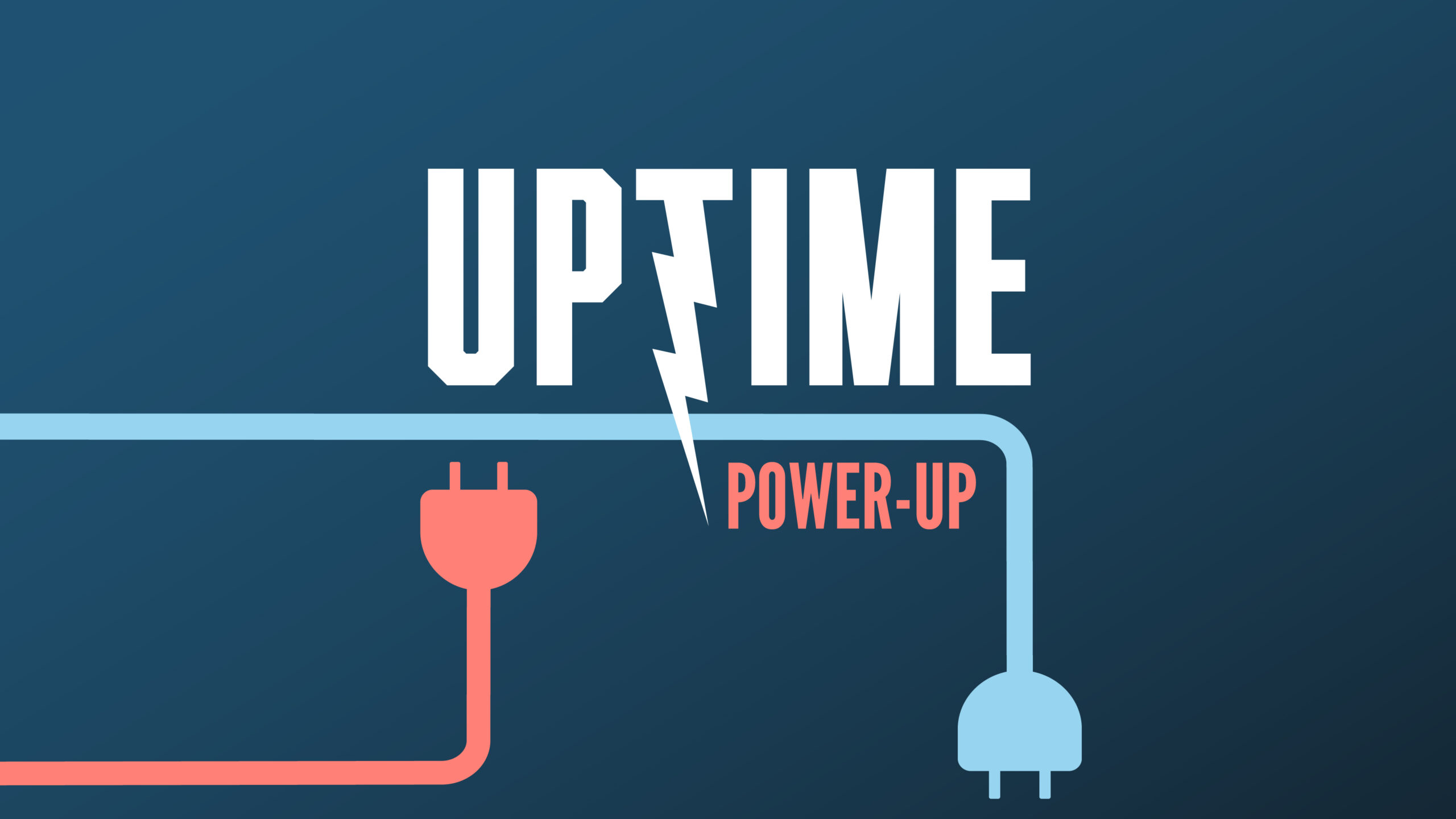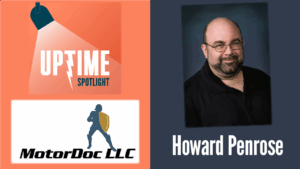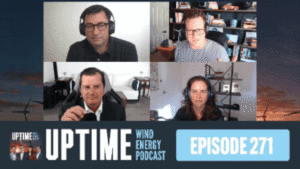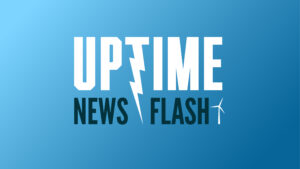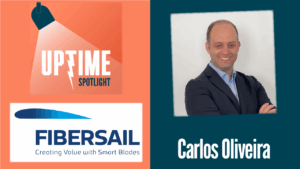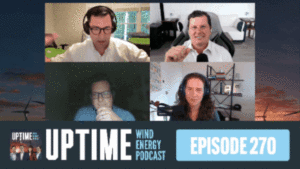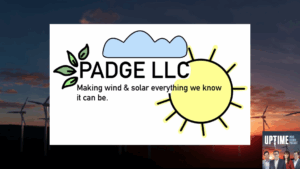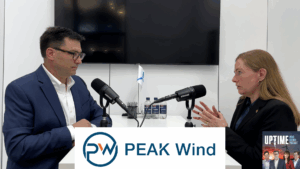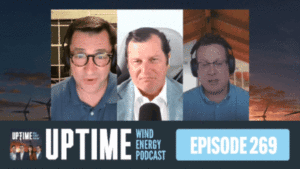Podcast: Play in new window | Download
We discuss Siemens Gamesa’s advanced blade de-icing system, their blade root repair fix, and a tower designed by Vestas with its own permanent crane system.
Fill out our Uptime listener survey and enter to win an Uptime mug!
Sign up now for Uptime Tech News, our weekly email update on all things wind technology. This episode is sponsored by Weather Guard Lightning Tech. Learn more about Weather Guard’s StrikeTape Wind Turbine LPS retrofit. Follow the show on Facebook, YouTube, Twitter, Linkedin and visit Weather Guard on the web. And subscribe to Rosemary Barnes’ YouTube channel here. Have a question we can answer on the show? Email us!
Phil Totaro: This is Power Up, where groundbreaking wind energy ideas become your clean energy future. Here’s your hosts, Allen Hall and Phil Totaro.
Allen Hall: We have really interesting patents this week, Phil, including this first one from Siemens Gamesa, and it is a wind turbine blade with an advanced de icing system. Now, you say to yourself, well, there’s been a lot of de icing systems on wind turbine blades.
In fact, Rosie has worked on a number of them for LM. But this one’s a little bit different. So it It uses a kind of a matrix setup of thermal heating areas arranged in sort of series and parallel connections, and it creates overlapping heating zones that can be very precisely controlled. Now that is very beneficial because a lot of times you More temperature, more heat towards the tip than you do at the root.
So you would like the temperature to be graded up towards the tip. It’s kind of hard to do a lot of times. But in this situation, you can adapt it to the situation. And this seems smart, but I haven’t seen it implemented. And I know Siemens Gamesa owners. Like the icing system. So maybe this is coming out in the near future, Phil.
Phil Totaro: Yeah, this would be interesting because this is very different than your conventional like blown air solution, like Enercon and other companies use. Where you could have a scenario where you’ve got like hotspots and, and heat concentrations at different points along the blades, particularly where you have ribs or bulkheads or something that would kind of get in the way of the airflow.
a thermal heating mat with again, different zones where you can kind of trigger, on off to, to try and either prevent ice accretion or actually provide deicing for the blade. So it’s, it’s a really interesting approach in that it gives you more granular control over where you want to be able to, to de ice and again, based on ice thickness, and
you can, monitor your
Phil Totaro: performance, or you might have a more sophisticated system that actually monitors how much ice is still stuck on the blade.
So. The, the implementation of this I think would be welcome. And it’s probably something that, I mean, heating mats are almost inevitably, they do introduce a certain amount of challenges, especially with lightning interactions. But generally speaking, they are a good way for wind turbine blades to to be de iced.
So hopefully this does make its way into more commercially available products in the future.
Allen Hall: Well, it looks like it will save somewhere between 20 and 50 percent of energy consumption to, to heat the blade. That would be remarkable if you could make a, even a 10 percent change in the amount of power required to heat the blade up.
Going to 50 percent would be astounding. And that makes me think you’re going to see this, this patent idea
Phil Totaro: show up pretty soon. I mean, to be blunt, like, and I’ll do respect to Enercon that pioneered a lot of this technology, but volumetric heating is just wildly inefficient, so it’s like, something that’s a more, cost efficient and thermally efficient solution is probably desirable.
Allen Hall: Our next patent is from Vestas and this. Seems like a relatively simple idea, but it evidently isn’t because they were able to patent it. So, rather than relying on an expensive jackup vessel for every major maintenance operation, Vestas has designed a tower with its own permanent crane system. The crane’s base is fixedly mounted to the tower with a pivoting arm that can be positioned in multiple configurations, so you can pick up your Cargo container from the ship, lift it, and then rotate the, this crane that’s built onto the, the transition piece, it looks like, and then put it on deck.
The wind turbine, pretty slick, but it seems like one of those patents, Phil, that’s, doesn’t pass the obvious test. Like it’s, seems obvious, like I would need a crane to lift things on and off, but there must be unique pieces to this that allow the patent office to issue a patent. What, what actually is unique about it and what’s really, frankly, pretty innovative about it is the fact that it doesn’t take up space on the deck for the transition piece, because the jib cranes from, pick your favorite brand they usually are fixedly mounted, as you said, onto the platform itself, but then it’s also requires a longer, a bit of a longer boom arm and it physically takes up whatever that footprint is to, to mount it to the, the transition piece itself.
Phil Totaro: So I, I like this conceptually I, we haven’t seen this implemented anywhere, and I don’t know if they’re likely to do it. I think this is kind of just defensive IP because , there’s still already kind of, a commercially available solution where they typically mount it to the Transition piece on the deck, and the reality of that is unless there’s a big reason to, to change that design philosophy, you’re probably going to see this just be kind of a defensive patent for, for a company like Festus to ensure that nobody else is going out there capturing the same thing and, developing the next big thing without owing them a bunch of royalties.
Allen Hall: Our third patent comes from Siemens Gamesa, and it has to do with repairing a blade root. So if you look at the end of the blade where the fibers all end and the bolts pop into the root end, there’s sometimes cracking around those holes, and that’s not great. You would like to repair that because those cracks don’t necessarily stop and you want to prevent further damage to the blade.
So the way it has generally been done is you can put a sacrificial plate in there to kind of stiffen up that area. But if you really need to fix it becomes sort of a problem. Like, how do you correct this cracking that’s happening and stabilize it? Well, what the Siemens idea is basically have a Get the blade off where you can get down to the root end and then machine those areas, so you can put in basically a metal shim with a gasket around it so it sits in place but remains sealed and keeps out dirt and debris and all the bad stuff that can happen along that blade root area, but it provides again a better surface to mate up with the hub.
That is the hard part, and so typically this gets really expensive to do and it’s hard to do on site. You would have to send it somewhere and the big expensive machines to do this. So you spend a bunch of money taking care of it. But Phil, this could be done. Drop the blade down. Bore it. Put these magical shims in there and save yourself a lot of money, it looks like.
Phil Totaro: Yeah. And, and while they don’t explicitly contemplate doing this as an in situ repair, it’s certainly highly desirable to be able to, to do this out in the field. The interesting thing though, for me about this idea is it’s basically like, just putting a washer on a nut and a bolt. And the whole reason you use a washer is because it distributes the load at the point where, you know, the, the end of the bolt interfaces with whatever piece of, of metal or, or, carbon or, carbon, Thermal plastic or whatever, whatever you’re interconnecting this to.
It’s basically providing a way for you to do that kind of a retrofit and repair that is going to necessarily strengthen and structurally reinforce the root, which has been a big problem for Siemens Gamesa and others over the years. So I, I like this one as an, an innovative idea.
Allen Hall: Yeah, I think you’re going to see a lot more.
in the field machining over the next year or two or three than we’ve seen in the last 10. And that’s going to be a way to keep some of these blades running long term. It’s a great idea and nice on Siemens to put it into action.



